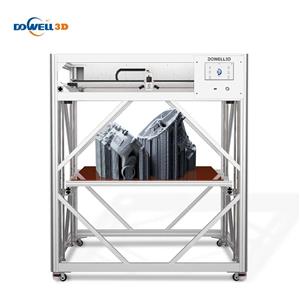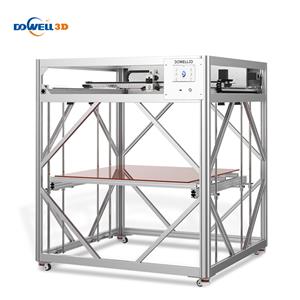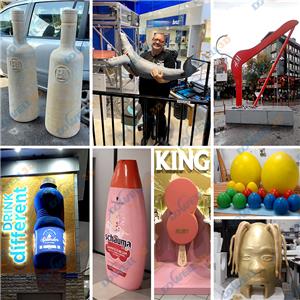Large 3D printing combine with technology and materials
Large 3D printing combine with technology and materials
Cultural relics protection and reproduction. For cultural relics that are on the verge of damage or have been damaged, accurate three-dimensional data of the cultural relics can be obtained through 3D scanning and 3D printing technology, so as to achieve restoration. Or some precious cultural relics cannot be displayed in the exhibition area of the museum, you can use 3D printing technology to copy them and display them as samples.
The application of 3D printing to the cultural and creative industries is very significant. On the whole, Large 3d printer printing technology can create a true, accurate and complete three-dimensional digital archive for unique cultural relics and artworks. With 3D printing technology, this digital model can be reproduced as a real object anytime, anywhere and with high fidelity. In addition, 3D printing technology can create a true, accurate and complete three-dimensional digital archive for unique cultural relics and artworks. With 3D printing technology, this digital model can be reproduced as a real object anytime, anywhere and with high fidelity.
The currently widely concerned cultural relic protection technology is undoubtedly the use of 3D digitization for data display, archiving and restoration. With the handheld laser 3D scanner, it can quickly, accurately, omni-directionally and multi-angle the 3D detail data of the cultural relics without touching the surface of the cultural relics, and save a complete data for the cultural relics, which can be repaired based on these data when accidentally damaged It can even repair cultural relics virtually in the computer to avoid the main damage caused by improper restoration directly. Cultural relics researchers can also use existing three-dimensional cultural relics models for auxiliary research.
Of course, in the specific application process, there are many different technologies for 3D printing, the difference lies in the use of various materials to create parts of different shapes. Commonly used materials for big fdm 3d printer printing include nylon glass fiber, polylactic acid, ABS resin, durable nylon materials, gypsum materials, aluminum materials, titanium alloys, stainless steel, silver plating, gold plating, and rubber materials. The design process of 3D fdm printing is: first modeling by computer modeling software, and then "partitioning" the built 3D model into layer-by-layer sections, that is, slices, thereby instructing the printer to print layer by layer. The standard file format for collaboration between the design software and the printer is the STL file format.





